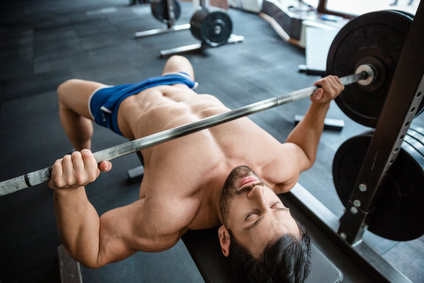If you ask around among athletes, you will quickly notice that building massive chest muscles is high on the list of goals. This is also not surprising, since a trained chest not only looks great, but also exudes a lot of strength and self-confidence. In addition, this ultimately even reduces the risk of shoulder injuries. The following post provides useful tips for getting the best results from chest training.
Create a realistic training plan with effective exercises
New miracle exercises are repeatedly advertised, and daring experiments are not necessary at all. To build a strong chest, all you need to do is rely on the basic, well-known exercises like barbell and dumbbell bench press, as these definitely improve the muscles of the chest. Of course, how the exercises are performed is also important. Pressure exercises such as bench press, in particular, are not only effective because only one weight is moved. This is not enough to build a massive chest. During the training it is mainly a question of the feeling of the muscles. Accordingly, it is important to keep your chest contraction focused by doing all repetitions slowly and in a controlled manner. This really squeezes the muscles.
Women should exercise their chest as well
Women mistakenly fear that chest training and the muscle growth that goes with it could negatively change the size and shape of the breast. Therefore, women often neglect this important muscle group. But there is absolutely no reason to forego breast training as a woman, because the feminine stimuli will certainly not suffer from it, on the contrary. The breast becomes more beautiful as it is tightened. Therefore, chest muscle training is also generally useful for women, but of course not in isolation, but should be part of training the entire body.
Use every training angle when bench press
Many exercisers only do flat and incline bench presses. In doing so, however, they waste a great deal of potential for growth. In order to fully exploit the potential of the chest muscles, it is advisable to include the negative bench press in the training program. This also recruits muscle fibers that would otherwise not be activated. The negative bench press trains the large pectoral muscle and its lower muscle fibers. In addition, the triceps, the saw muscles and the deltoid muscles are used. Of course, this exercise is only possible if a negative bank is available.
Focus on the shape
Many athletes think that chest training is very easy, but there are also a lot of mistakes possible when training the chest muscles. A neat shape, i.e. the quality of the movement sequences, is one of the most important factors for muscle growth. If the proper execution is disregarded, this leads to the fact that the muscle fibers are no longer adequately stressed, while the secondary auxiliary muscles are exposed to stresses for which they were not designed. Therefore, there is also no point in moving too much weights with too much effort in too short a period of time, because this only provokes injuries that significantly hinder the achievement of the goals. It is therefore important to concentrate and pay attention to the quality of each individual repetition, as this is the only way to achieve the maximum training intensity.
Motivate to top performance
The human body can adapt itself to almost all loads within a very short time, which sometimes seem impossible at first. Accordingly, the body should always be challenged anew. In the bench press area, it means increasing your training weight regularly. If this is not possible, there is also the alternative of maximizing the number of repetitions that are completed. As soon as the optimal weight is reached, which can be moved in a controlled and clean manner over the entire set, this should be increased slowly, because this is the only way to stimulate the growth of muscle fibers.
RPD-Methode
In the event that the training weight cannot be increased, it is also advisable to resort to the RPD method. This represents a combination of the so-called drop sets and the “rest-pause” intensity technique and consists of three phases. Drop sets are similar to extended sets, with the difference that they are performed with a constant weight. The “rest” phase starts with a weight that can be used for 6 to 8 repetitions. After this partial set, there is a 5 second break before the weight is reduced by about 25 percent. This repeats as many repetitions as needed until muscle failure occurs. This process is repeated until a total of 25 to 30 repetitions have been completed. This method should be used at the end of the chest training so that the maximum possible is extracted from the muscles.
Conclusion
If the points listed above are observed and the chest training is carried out hard and disciplined, then nothing stands in the way of maximum growth of the chest muscles. Finally, we come to the important question: How often should the chest be trained during the week? It is very important that the muscles are given time to regenerate. He can only do this with a longer rest period than 2 days. Therefore, the recommendation is to do chest training an average of two times a week.

